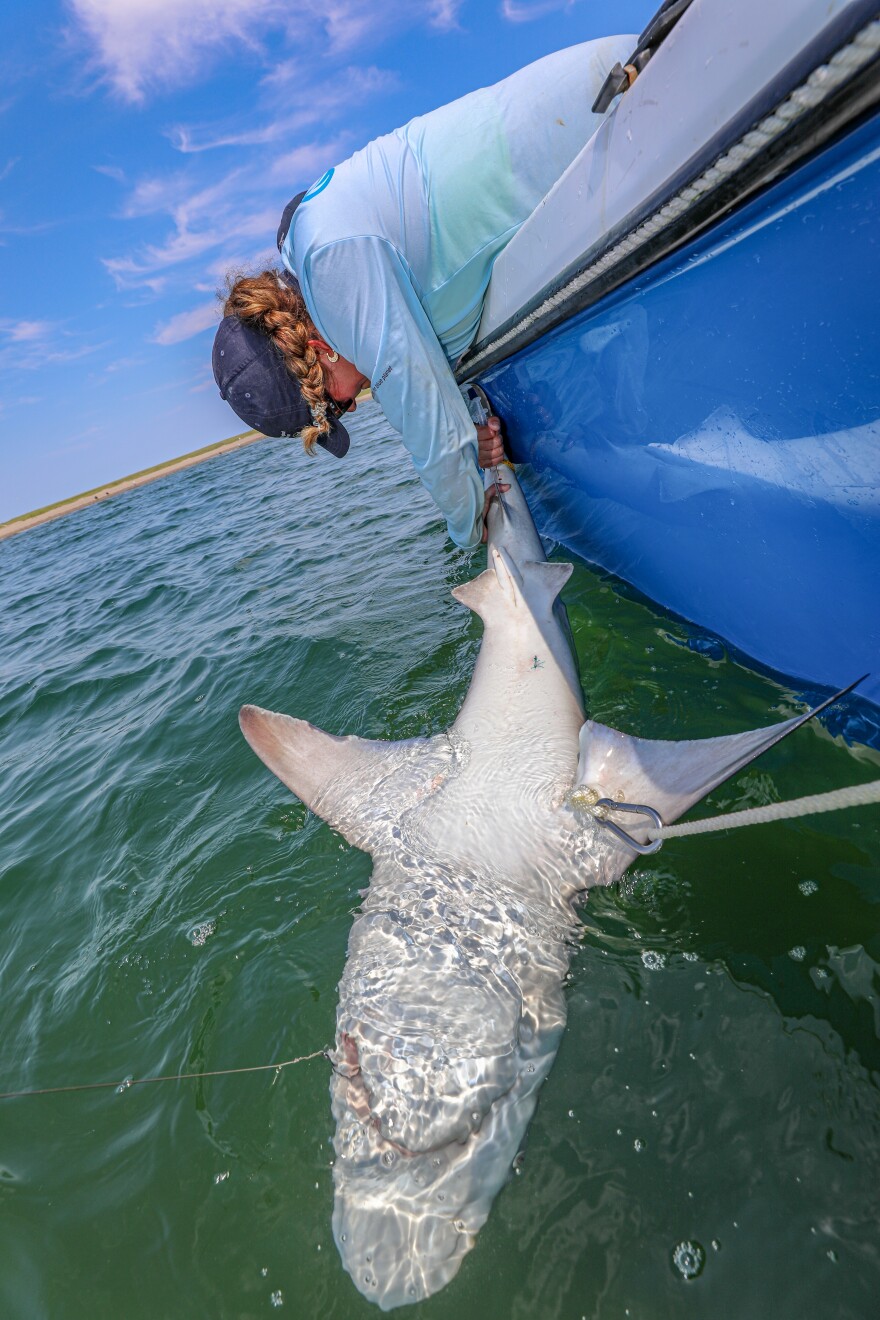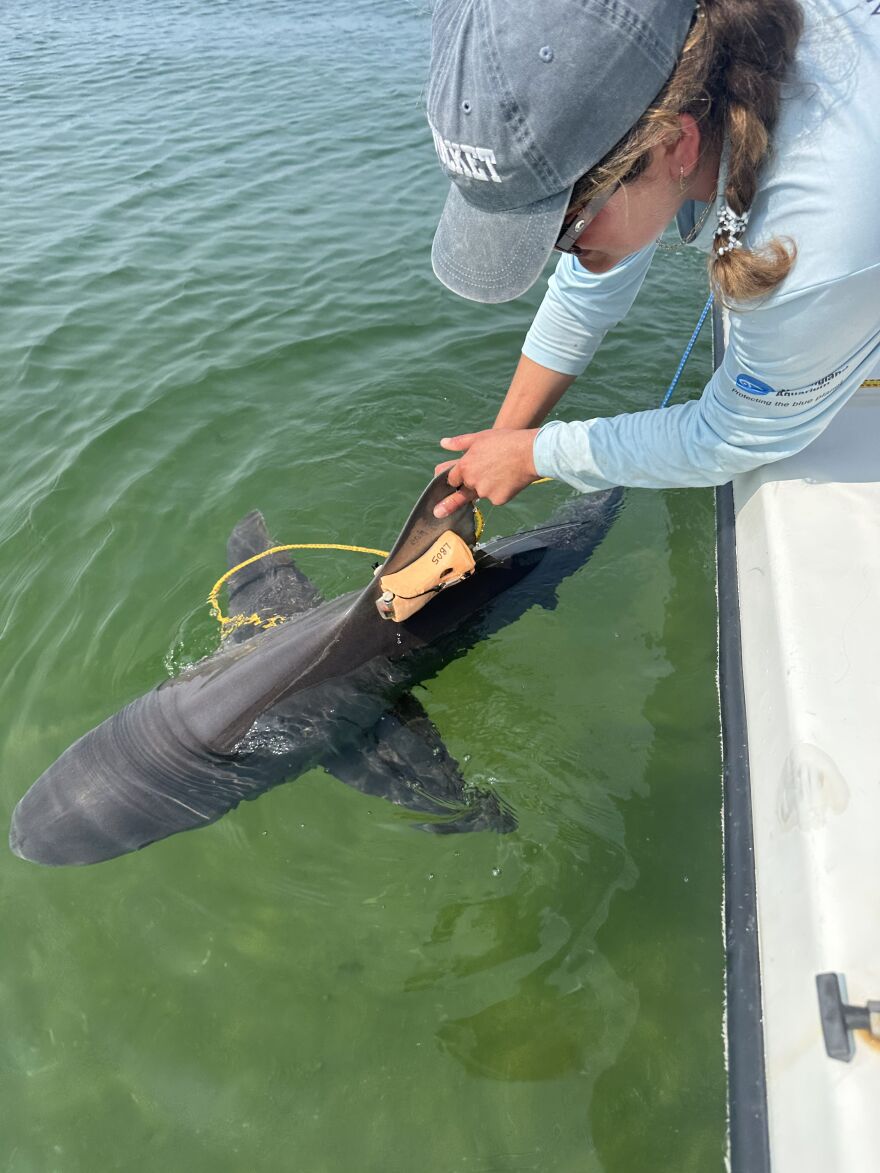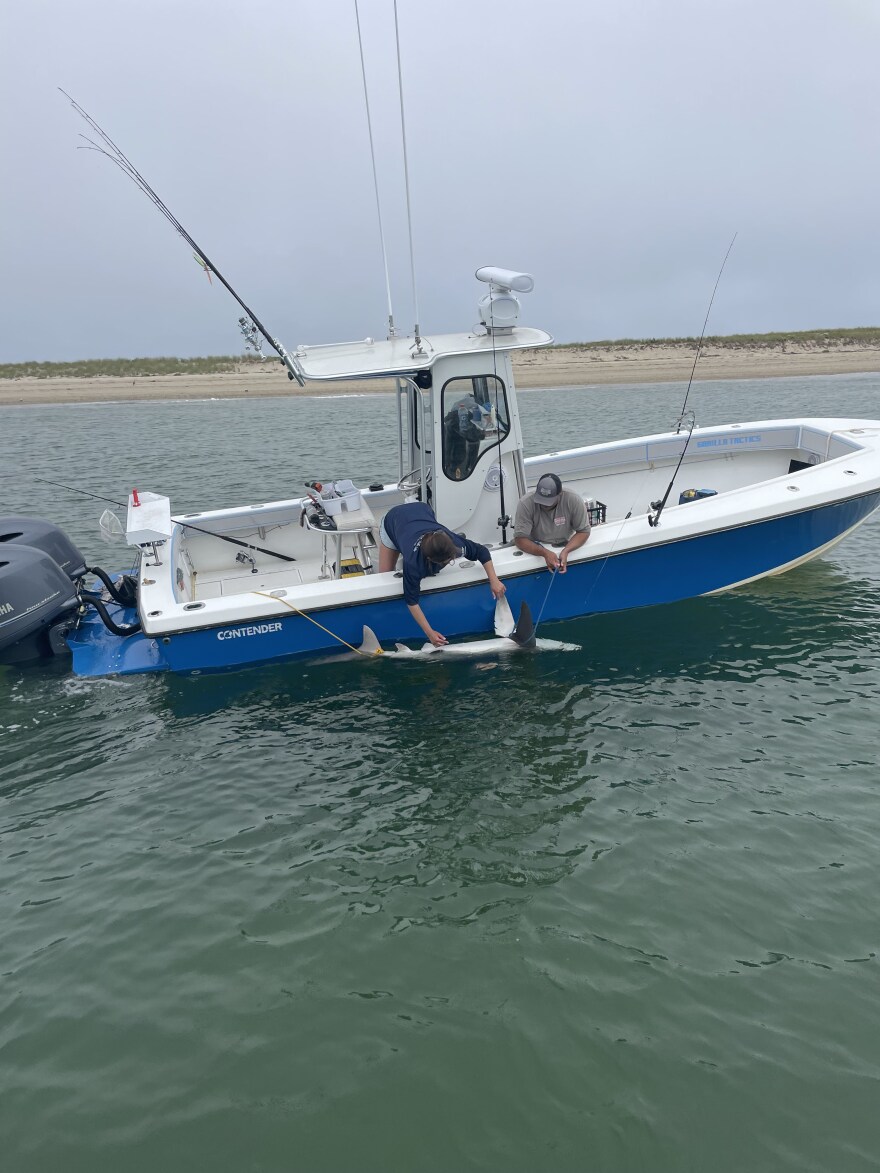Caroline Collatos grew up spending summers on Nantucket. Now, as a PhD candidate at UMass Boston working with the New England Aquarium, she spends her days on the island researching sandbar sharks.
CAI's Gilda Geist spoke to Caroline to learn more about her work with the sandbar shark (and to celebrate Shark Week).
Gilda Geist Great white sharks tend to get a lot of attention around here, understandably so, but your research is focused on sandbar sharks. Can you introduce us to the sandbar shark and tell us a little bit about how they fit into our region's ecosystem?
Carolie Collatos Sandbar sharks are your typical looking shark. They come up to the Cape and Islands area in the summer. They usually show up around mid-June, when the water temperature is to their liking, and they stay around our islands and our area throughout the summer. And then they'll migrate down south in the winter, down to the South Carolina area. This species gets to be about seven feet long. Their main prey is bluefish, fluke and striper. They'll eat a lot of eel. And they play an important role in monitoring and maintaining those bony fish populations, whereas we get a lot of white sharks here that are going for seals. So, that can be a large difference between the species. And actually, a full-grown sandbar shark could be prey to a full-grown white shark. They're actually not really a large threat to humans at all. They've never been affiliated in an unprovoked attack.
GG Are you casting your fishing rod into the ocean and like waiting for these guys to bite?
CC Yes, and I will reel them in myself—not all the time, but I'll do it. We put a piece of bluefish on a hook and throw it out. We'll be pretty close to shore. Sometimes I fish from the beach, sometimes I fish from the boat, depending on what tag I'm putting out and what method I need to follow for my data. Shark fishing can be really fun or really boring because you just kind of wait around sometimes, waiting for the shark to find the bait and take the hook successfully. And then once they do that, we reel them into the shoreline or we bring them to the side of the boat. If they're beside the boat, I restrain them with ropes so that they're safe and I'm safe during the handling process. I handle them for three to four minutes and then I release them with their tags.

GG What is the goal of your research with these sandbar sharks?
CC I actually spent a lot of my childhood and years growing up on Nantucket. I noticed in like 2018/2019 that we were seeing a lot more sandbar sharks, so I really wanted to kind of monitor the 'who, what, when, where and why' of this species. When are they here? What sizes are we seeing? What sexes are we seeing? Why are they using this area? Is it primarily for suitable habitat that they can find food and forage and have refuge from predators? Are they here for mating? The species was heavily overfished up until the 80s and 90s. In the early 2000s, they changed regulations so that the species could not be commercially and recreationally kept. You can still fish for it recreationally, but you must release the species. So, we started seeing this population rebound a couple decades later because sharks are so slow to grow and take so long to reproduce. So, it's clearly an important area for this species, and it's also the most northern range of their habitat, so as we have more waters warming, we might see them venturing north. And it was important for me to create this baseline of data to figure out why this area is important so that if we do see changes in the future, we can actually address those changes and point to them with scientific evidence and data.

GG Do you have any favorite sandbar shark fun facts?
CC Yeah, so they give live birth. Not every shark species does that, but sandbar sharks are kind of born the same way humans are, with a placenta. They can get to be over 30 years old in the wild. They can't reproduce until they're about 15 years old. There's also no parental care in any shark species, so a baby sandbar shark can be eaten by its own larger relative or mom if they come across each other at any point in time after birth. I have some of my favorite sandbar sharks that I've tagged, and some of them have been coming back to Nantucket for about five or six years now every summer. I consider those my most valuable sharks, my MVSs, of my study.
GG Do they have names?
CC Yeah, so we have Cosmo, we have Callie, Cinnamon Bun, Oregano, Eugenie, Buzz Aldrin, Clarence Carter. When you get over 200 of them, you can really start coming up with a lot of names.








